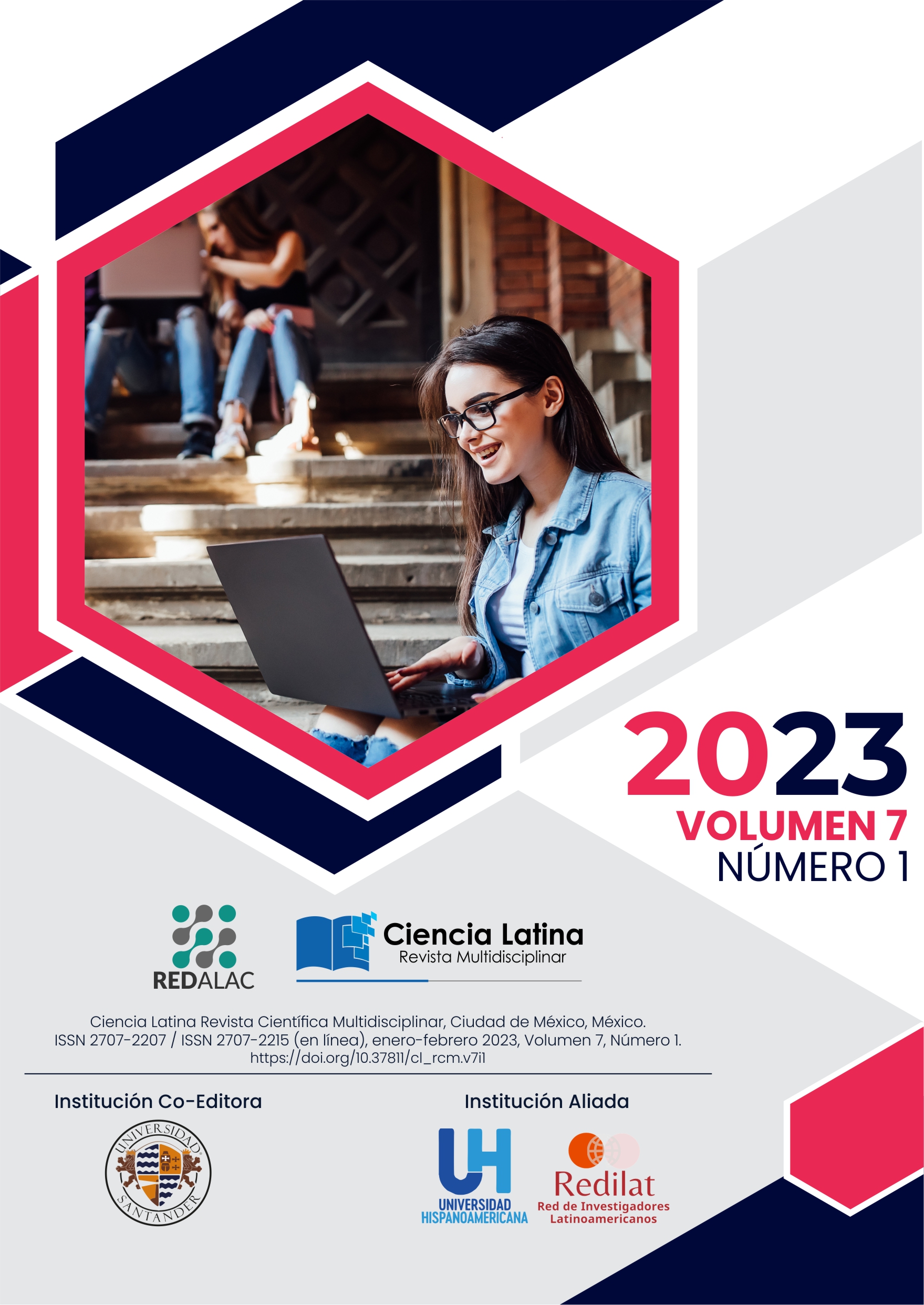Enfermedad de Von Willebrand, revisión sobre una enfermedad hematológica frecuente y subdiagnosticada
Resumen
Este es el trastorno hemorrágico hereditario más común, descrito por primera vez en las Islas Aland por Erik von Willebrand. Ocurre como resultado de una disminución en los niveles plasmáticos o un defecto en el factor de von Willebrand, que es una gran glicoproteína multimérica. Los monómeros de esta glicoproteína se someten a N-glucosilación para formar dímeros que se organizan para dar multímeros. La unión con las proteínas plasmáticas (especialmente el factor VIII) es la función principal del factor de von Willebrand. La enfermedad es de dos formas: formas heredadas y adquiridas. Las formas heredadas son de tres tipos principales. Son tipo 1, tipo 2 y tipo 3; en el que el tipo 2 se subdivide en 2A, 2B, 2M, 2N. El tipo 1 es más frecuente que todos los demás tipos. El sangrado mucocutáneo es leve en el tipo 1, mientras que es de leve a moderado en los tipos 2A, 2B y 2M. El tipo 2N tiene síntomas similares a los de la hemofilia. La fisiopatología de cada tipo depende de los defectos cualitativos o cuantitativos del factor de von Willebrand. El diagnóstico se basa en el antígeno del factor de von Willebrand, el ensayo de actividad del factor de von Willebrand, la actividad del coagulante FVIII y algunas otras pruebas adicionales. Los resultados deben analizarse dentro del contexto del grupo sanguíneo. El análisis del multímero del factor von Willebrand es esencial para tipificar y subtipificar la enfermedad. El manejo de la enfermedad involucra terapia de reemplazo, terapia de no reemplazo y otras terapias que incluyen antifibrinolíticos y agentes tópicos. El análisis del multímero del factor von Willebrand es esencial para tipificar y subtipificar la enfermedad. El manejo de la enfermedad involucra terapia de reemplazo, terapia de no reemplazo y otras terapias que incluyen antifibrinolíticos y agentes tópicos.
Descargas
Citas
Agrawal, Y. P., & Dzik, W. (2001). The vWF content of factor VIII concentrates. Transfusion, 41(1), 153. https://doi.org/10.1046/J.1537-2995.2001.41010153.X
Baronciani, L. (2019). The molecular basis of von Willebrand disease. Molecular Hematology, 235–250. https://doi.org/10.1002/9781119252863.CH18
Bodó, I., Katsumi, A., Tuley, E. A., Eikenboom, J. C. J., Dong, Z., & Evan Sadler, J. (2001). Type 1 von Willebrand disease mutation Cys1149Arg causes intracellular retention and degradation of heterodimers: a possible general mechanism for dominant mutations of oligomeric proteins. Blood, 98(10), 2973–2979. https://doi.org/10.1182/BLOOD.V98.10.2973
Budde, U., Pieconka, A., Will, K., & Schneppenheim, R. (2006). Laboratory testing for von Willebrand disease: contribution of multimer analysis to diagnosis and classification. Seminars in Thrombosis and Hemostasis, 32(5), 514–521. https://doi.org/10.1055/S-2006-947866
Cattaneo, M., Lecchi, A., Agati, B., Lombardi, R., & Zighetti, M. L. (1999). Evaluation of platelet function with the PFA-100 system in patients with congenital defects of platelet secretion. Thrombosis Research, 96(3), 213–217. https://doi.org/10.1016/S0049-3848(99)00102-4
Chang, A. C., Rick, M. E., Ross Pierce, L., & Weinstein, M. J. (1998). Summary of a workshop on potency and dosage of von Willebrand factor concentrates. Haemophilia : The Official Journal of the World Federation of Hemophilia, 4 Suppl 3, 1–6. https://doi.org/10.1046/J.1365-2516.1998.0040S3001.X
Ciavarella, G., Ciavarella, N., Antoncecchi, S., De Mattia, D., Ranieri, P., Dent, J., Zimmerman, T. S., & Ruggeri, Z. M. (1985). High-resolution analysis of von Willebrand factor multimeric composition defines a new variant of type I von Willebrand disease with aberrant structure but presence of all size multimers (type IC). Blood, 66(6), 1423–1429. https://doi.org/10.1182/BLOOD.V66.6.1423.1423
De la Fuente, B., Kasper, C. K., Rickles, F. R., & Hoyer, L. W. (1985). Response of patients with mild and moderate hemophilia A and von Willebrand’s disease to treatment with desmopressin. Annals of Internal Medicine, 103(1), 6–14. https://doi.org/10.7326/0003-4819-103-1-6
Dean, J. A., Blanchette, V. S., Carcao, M. D., Stain, A. M., Sparling, C. R., Siekmann, J., Turecek, P. L., Lillicrap, D., & Rand, M. L. (2000). von Willebrand disease in a pediatric-based population--comparison of type 1 diagnostic criteria and use of the PFA-100 and a von Willebrand factor/collagen-binding assay. Thrombosis and Haemostasis, 84(3), 401–409. https://pubmed.ncbi.nlm.nih.gov/11019962/
Dobrkovska, A., Krzensk, U., & Chediak, J. R. (1998). Pharmacokinetics, efficacy and safety of Humate-P in von Willebrand disease. Haemophilia : The Official Journal of the World Federation of Hemophilia, 4 Suppl 3(SUPPL. 3), 33–39. https://doi.org/10.1046/J.1365-2516.1998.0040S3033.X
Eikenboom, J. C. J., Matsushita, T., Reitsma, P. H., Tuley, E. A., Castaman, G., Briët, E., & Sadler, J. E. (1996). Dominant Type 1 von Willebrand Disease Caused by Mutated Cysteine Residues in the D3 Domain of von Willebrand Factor. Blood, 88(7), 2433–2441. https://doi.org/10.1182/BLOOD.V88.7.2433.BLOODJOURNAL8872433
Eikenboom, J. C., Ploos van Amstel, H. K., Reitsma, P. H., & Briët, E. (1992). Mutations in severe, type III von Willebrand’s disease in the Dutch population: candidate missense and nonsense mutations associated with reduced levels of von Willebrand factor messenger RNA . Thrombosis and Haemostasis, 68(4), 448–454. https://pubmed.ncbi.nlm.nih.gov/1448779/
Favaloro E. J. (2000). Collagen binding assay for von Willebrand factor (VWF:CBA): detection of von Willebrands Disease (VWD), and discrimination of VWD subtypes, depends on collagen source. Thrombosis and Haemostasis, 83(1), 127–135. https://pubmed.ncbi.nlm.nih.gov/10669166/
Favaloro, E. J. (2000). Detection of von Willebrand disorder and identification of qualitative von Willebrand factor defects. Direct comparison of commercial ELISA-based von Willebrand factor activity options. American Journal of Clinical Pathology, 114(4), 608–618. https://doi.org/10.1309/2PMF-3HK9-V8TT-VFUN
Favaloro, E. J. (2001). Appropriate laboratory assessmant as a critical facet in the proper diagnosis and classification of von Willebrand disorder. Best Practice and Research: Clinical Haematology, 14(2), 299–319. https://doi.org/10.1053/beha.2001.0135
Favaloro, E. J., Bonar, R., Kershaw, G., Sioufi, J., Hertzberg, M., Street, A., Lloyd, J., & Marsden, K. (2004). Laboratory diagnosis of von Willebrand’s disorder: quality and diagnostic improvements driven by peer review in a multilaboratory test process. Haemophilia, 10(3), 232–242. https://doi.org/10.1111/J.1365-2516.2004.00897.X
Favaloro, E. J., Lillicrap, D., Lazzari, M. A., Cattaneo, M., Mazurier, C., Woods, A., Meschengieser, S., Blanco, A., Kempfer, A. C., Hubbard, A., & Chang, A. (2004). von Willebrand disease: laboratory aspects of diagnosis and treatment. Haemophilia, 10(4), 164–168. https://doi.org/10.1111/J.1365-2516.2004.00979.X
Favaloro, E. J., Soltani, S., & McDonald, J. (2004). Potential laboratory misdiagnosis of hemophilia and von Willebrand disorder owing to cold activation of blood samples for testing. American Journal of Clinical Pathology, 122(5), 686–692. https://doi.org/10.1309/E494-7DG4-8TVY-19C2
Federici, A. B., Castaman, G., & Mannucci, P. M. (2002). Guidelines for the diagnosis and management of von Willebrand disease in Italy. Haemophilia : The Official Journal of the World Federation of Hemophilia, 8(5), 607–621. https://doi.org/10.1046/J.1365-2516.2002.00672.X
Federici, A. B., Sacco, R., Stabile, F., Carpenedo, M., Zingaro, E., & Mannucci, P. M. (2000). Optimising local therapy during oral surgery in patients with von Willebrand disease: effective results from a retrospective analysis of 63 cases. Haemophilia : The Official Journal of the World Federation of Hemophilia, 6(2), 71–77. https://doi.org/10.1046/J.1365-2516.2000.00370.X
Federici, Augusto B. (2006a). Acquired von Willebrand syndrome: an underdiagnosed and misdiagnosed bleeding complication in patients with lymphoproliferative and myeloproliferative disorders. Seminars in Hematology, 43(1 Suppl 1), S48-58. https://doi.org/10.1053/J.SEMINHEMATOL.2005.11.003
Federici, Augusto B. (2006b). Diagnosis of inherited von Willebrand disease: a clinical perspective. Seminars in Thrombosis and Hemostasis, 32(6), 555–565. https://doi.org/10.1055/S-2006-949661
Federici, Augusto B., Mazurier, C., Berntorp, E., Lee, C. A., Scharrer, I., Goudemand, J., Lethagen, S., Nitu, I., Ludwig, G., Hilbert, L., & Mannucci, P. M. (2004). Biologic response to desmopressin in patients with severe type 1 and type 2 von Willebrand disease: results of a multicenter European study. Blood, 103(6), 2032–2038. https://doi.org/10.1182/BLOOD-2003-06-2072
Franchini, M., & Lippi, G. (2007). Acquired von Willebrand syndrome: an update. American Journal of Hematology, 82(5), 368–375. https://doi.org/10.1002/AJH.20830
Fressinaud, E., Veyradier, A., Truchaud, F., Martin, I., Boyer-Neumann, C., Trossaert, M., & Meyer, D. (1998). Screening for von Willebrand Disease With a New Analyzer Using High Shear Stress: A Study of 60 Cases. Blood, 91(4), 1325–1331. https://doi.org/10.1182/BLOOD.V91.4.1325
Gastineau, D. A., & Moore, S. B. (2001). How important are ABO-related variations in coagulation factor levels? Transfusion, 41(1), 4–5. https://doi.org/10.1046/J.1537-2995.2001.41010004.X
Gaucher, C., Diéval, J., & Mazurier, C. (1994). Characterization of von Willebrand factor gene defects in two unrelated patients with type IIC von Willebrand disease. Blood., 84(4), 1024–1030. https://pubmed.ncbi.nlm.nih.gov/8049421/
Gill, J. C., Endres-Brooks, J., Bauer, P. J., Marks, W. J., & Montgomery, R. R. (1987). The Effect of ABO Blood Group on the Diagnosis of von Willebrand Disease. Blood, 69(6), 1691–1695. https://doi.org/10.1182/BLOOD.V69.6.1691.1691
Holmberg, L., Nilsson, I. M., Borge, L., Gunnarsson, M., & Sjörin, E. (1983). Platelet aggregation induced by 1-desamino-8-D-arginine vasopressin (DDAVP) in Type IIB von Willebrand’s disease. The New England Journal of Medicine, 309(14), 816–821. https://doi.org/10.1056/NEJM198310063091402
James, P. D., & Goodeve, A. C. (2011). von Willebrand disease. Genetics in Medicine, 13(5), 365–376. https://doi.org/10.1097/GIM.0B013E3182035931
James, P. D., Notley, C., Hegadorn, C., Leggo, J., Tuttle, A., Tinlin, S., Brown, C., Andrews, C., Labelle, A., Chirinian, Y., O’Brien, L., Othman, M., Rivard, G., Rapson, D., Hough, C., & Lillicrap, D. (2007). The mutational spectrum of type 1 von Willebrand disease: Results from a Canadian cohort study. Blood, 109(1), 145–154. https://doi.org/10.1182/BLOOD-2006-05-021105.
James, P., & Lillicrap, D. (2006). Genetic testing for von Willebrand disease: the Canadian experience. Seminars in Thrombosis and Hemostasis, 32(5), 546–552. https://doi.org/10.1055/S-2006-947870
James, P., & Lillicrap, D. (2008). The role of molecular genetics in diagnosing von Willebrand disease. Seminars in Thrombosis and Hemostasis, 34(6), 502–508. https://doi.org/10.1055/S-0028-1103361
Kadir, R. A., & Chi, C. (2006). Women and von Willebrand disease: controversies in diagnosis and management. Seminars in Thrombosis and Hemostasis, 32(6), 605–615. https://doi.org/10.1055/S-2006-949665
Kaufmann, J. E., & Vischer, U. M. (2003). Cellular mechanisms of the hemostatic effects of desmopressin (DDAVP). Journal of Thrombosis and Haemostasis : JTH, 1(4), 682–689. https://doi.org/10.1046/J.1538-7836.2003.00190.X
Kaufmann, Jocelyne E., Oksche, A., Wollheim, C. B., Günther, G., Rosenthal, W., & Vischer, U. M. (2000). Vasopressin-induced von Willebrand factor secretion from endothelial cells involves V2 receptors and cAMP. The Journal of Clinical Investigation, 106(1), 107–116. https://doi.org/10.1172/JCI9516
Keeney, S., Bowen, D., Cumming, A., Enayat, S., Goodeve, A., & Hill, M. (2008). The molecular analysis of von Willebrand disease: a guideline from the UK Haemophilia Centre Doctors’ Organisation Haemophilia Genetics Laboratory Network. Haemophilia : The Official Journal of the World Federation of Hemophilia, 14(5), 1099–1111. https://doi.org/10.1111/J.1365-2516.2008.01813.X
Kunicki, T. J., Baronciani, L., Canciani, M. T., Gianniello, F., Head, S. R., Mondala, T. S., Salomon, D. R., & Federici, A. B. (2006). An association of candidate gene haplotypes and bleeding severity in von Willebrand disease type 2A, 2B, and 2M pedigrees. Journal of Thrombosis and Haemostasis, 4(1), 137–147. https://doi.org/10.1111/J.1538-7836.2005.01675.X
Lankhof, H., Damas, C., Schiphorst, M. E., IJsseldijk, M. J. W., Bracke, M., Sixma, J. J., Vink, T., & De Groot, P. G. (1997). Functional Studies on Platelet Adhesion With Recombinant von Willebrand Factor Type 2B Mutants R543Q and R543W Under Conditions of Flow. Blood, 89(8), 2766–2772. https://doi.org/10.1182/BLOOD.V89.8.2766
Ledford-Kraemer, M. R. (2010). Analysis of von Willebrand factor structure by multimer analysis. American Journal of Hematology, 85(7), 510–514. https://doi.org/10.1002/AJH.21739
Levy, G. G., Motto, D. G., & Ginsburg, D. (2005). ADAMTS13 turns 3. Blood, 106(1), 11–17. https://doi.org/10.1182/BLOOD-2004-10-4097
Lillicrap, D., Poon, M. C., Walker, I., Xie, F., & Schwartz, B. A. (2002). Efficacy and safety of the factor VIII/von Willebrand factor concentrate, haemate-P/humate-P: ristocetin cofactor unit dosing in patients with von Willebrand disease. Thrombosis and Haemostasis, 87, 224–230. https://read.qxmd.com/read/11858481/efficacy-and-safety-of-the-factor-viii-von-willebrand-factor-concentrate-haemate-p-humate-p-ristocetin-cofactor-unit-dosing-in-patients-with-von-willebrand-disease
Mannucci, P. M. (1997). Desmopressin (DDAVP) in the treatment of bleeding disorders: the first 20 years. Blood, 90(7), 2515–2521. https://pubmed.ncbi.nlm.nih.gov/9326215/
Mannucci, P. M., Lombardi, R., Castaman, G., Dent, J. A., Lattuada, A., Rodeghiero, F., & Zimmerman, T. S. (1988). von Willebrand Disease “Vicenza” With Larger-Than-Normal (Supranormal) von Willebrand Factor Multimers. Blood, 71(1), 65–70. https://doi.org/10.1182/BLOOD.V71.1.65.65
Mannucci, P. M., Pareti, F. I., Ruggeri, Z. M., & Capitanio, A. (1977). 1-Deamino-8-d-arginine vasopressin: a new pharmacological approach to the management of haemophilia and von Willebrands’ diseases. Lancet, 1(8017), 869–872. https://doi.org/10.1016/S0140-6736(77)91197-7
Mannucci, Pier Mannuccio. (1998). Hemostatic drugs. The New England Journal of Medicine, 339(4), 245–253. https://doi.org/10.1056/NEJM199807233390407
Mannucci, Pier Mannuccio. (2004). Treatment of von Willebrand’s Disease. Https://Doi.Org/10.1056/NEJMra040403, 351(7), 683–694. https://doi.org/10.1056/NEJMRA040403
McCallum, C. J., Peake, I. R., Peake, I. R., & Bloom, A. L. (1983). Factor VIII levels and blood group antigens. Thrombosis and Haemostasis, 50(3), 757. https://pubmed.ncbi.nlm.nih.gov/6417823/
Michiels, J. J., Van de Velde, A., Van Vliet, H. H. D. M., Van der Planken, M., Schroyens, W., & Berneman, Z. (2002). Response of von Willebrand factor parameters to desmopressin in patients with type 1 and type 2 congenital von Willebrand disease: diagnostic and therapeutic implications. Seminars in Thrombosis and Hemostasis, 28(2), 111–131. https://doi.org/10.1055/S-2002-27814
Miller, R. A., May, M. W., Hendry, W. F., Whitfield, H. N., & Wickham, J. E. A. (1980). The prevention of secondary haemorrhage after prostatectomy: the value of antifibrinolytic therapy. British Journal of Urology, 52(1), 26–28. https://doi.org/10.1111/J.1464-410X.1980.TB02914.X
Moeller, A., Weippert-Kretschmer, M., Prinz, H., & Kretschmer, V. (2001). Influence of ABO blood groups on primary hemostasis. Transfusion, 41(1), 56–60. https://doi.org/10.1046/J.1537-2995.2001.41010056.X
Mohanty, D., Ghosh, K., Marwaha, N., Kaur, S., Chauhan, A. P., & Das, K. C. (1984). Major blood group antigens--a determinant of factor VIII levels in blood? Thrombosis and Haemostasis, 51(3), 414. https://pubmed.ncbi.nlm.nih.gov/6437009/
Montgomery, R. (2001). Structure and function of von Willebrand factor. In R. Colman, J. Hirsh, V. Marder, A. Clowes, & J. George (Eds.), Hemostasis and thrombosis: Basic principles and clinical practice (4th ed., Issue 1, pp. 249–274). Williams and Wilkins. https://doi.org/10.4103/0250-474X.89751
Montgomery, R. R., & Gill, J. C. (2000). Interactions between von Willebrand factor and Factor VIII: where did they first meet. Journal of Pediatric Hematology/Oncology, 22(3), 269–275. https://doi.org/10.1097/00043426-200005000-00017
National Heart, L. (NIH). (2008, January). The Diagnosis, Evaluation and Management of von Willebrand Disease. Department of Health and Human Services. https://www.nhlbi.nih.gov/health-topics/diagnosis-evaluation-and-management-of-von-willebrand-disease
National Heart, L. and B. I. and conditions index. (2010). Von Willebrand Disease. https://www.nhlbi.nih.gov/resources/von-willebrand-disease-glance
National Heart Lung and Blood Institute. (2008). The Diagnosis, Evaluation and Management of von Willebrand Disease. https://www.nhlbi.nih.gov/health-topics/diagnosis-evaluation-and-management-of-von-willebrand-disease
Neugebauer, B. M., Goy, C., Budek, I., & Seitz, R. (2002). Comparison of two von Willebrand factor collagen-binding assays with different binding affinities for low, medium, and high multimers of von Willebrand factor. Seminars in Thrombosis and Hemostasis, 28(2), 139–147. https://doi.org/10.1055/S-2002-27816
Nishino, M., Girma, J., Rothschild, C., Fressinaud, E., & Meyer, D. (1989). New Variant of von Willebrand Disease With Defective Binding to Factor VIII. Blood, 74(5), 1591–1599. https://doi.org/10.1182/BLOOD.V74.5.1591.1591
Orstavik, K. H., Magnus, P., Reisner, H., Berg, K., Graham, J. B., & Nance, W. (1985). Factor VIII and factor IX in a twin population. Evidence for a major effect of ABO locus on factor VIII level. American Journal of Human Genetics, 37(1), 89. /pmc/articles/PMC1684532/?report=abstract
Posan, E., McBane, R. D., Grill, D. E., Motsko, C. L., & Nichols, W. L. (2003). Comparison of PFA-100 testing and bleeding time for detecting platelet hypofunction and von Willebrand disease in clinical practice . Thrombosis and Haemostasis, 90(3), 483–490. https://pubmed.ncbi.nlm.nih.gov/12958618/
Pruthi, R. K. (2006). A practical approach to genetic testing for von Willebrand disease. Mayo Clinic Proceedings, 81(5), 679–691. https://doi.org/10.4065/81.5.679
Quiroga, T., Goycoolea, M., Muñoz, B., Morales, M., Aranda, E., Panes, O., Pereira, J., & Mezzano, D. (2004). Template bleeding time and PFA-100 have low sensitivity to screen patients with hereditary mucocutaneous hemorrhages: comparative study in 148 patients. Journal of Thrombosis and Haemostasis : JTH, 2(6), 892–898. https://doi.org/10.1111/J.1538-7836.2004.00693.X
Rakocz, M., Mazar, A., Varon, D., Spierer, S., Blinder, D., & Martinowitz, U. (1993). Dental extractions in patients with bleeding disorders. The use of fibrin glue. Oral Surgery, Oral Medicine, and Oral Pathology, 75(3), 280–282. https://doi.org/10.1016/0030-4220(93)90135-Q
Rodeghiero, F., Castaman, G., Tosetto, A., Batlle, J., Baudo, F., Cappelletti, A., Casana, P., De Bosch, N., Eikenboom, J. C. J., Federici, A. B., Lethagen, S., Linari, S., & Srivastava, A. (2005). The discriminant power of bleeding history for the diagnosis of type 1 von Willebrand disease: an international, multicenter study. Journal of Thrombosis and Haemostasis : JTH, 3(12), 2619–2626. https://doi.org/10.1111/J.1538-7836.2005.01663.X
Rodgers, S. E., Lerda, N. V., Favaloro, E. J., Duncan, E. M., Casey, G. J., Quinn, D. M., Hertzberg, M., & Lloyd, J. V. (2002). Identification of von Willebrand disease type 2N (Normandy) in Australia: a cross-laboratory investigation using different methods. American Journal of Clinical Pathology, 118(2), 269–276. https://doi.org/10.1309/2D6F-RR03-8EFN-28F5
Derechos de autor 2023 Juan Sebastián Theran león;Luis Andrés Dulcey Sarmiento;Danuil Lobo Quintero;Laura Yibeth Esteban Badillo;Stephania Julieth Nariño Anaya;Paula Fernanda Díaz Calderón

Esta obra está bajo licencia internacional Creative Commons Reconocimiento 4.0.













.png)




















.png)
1.png)


